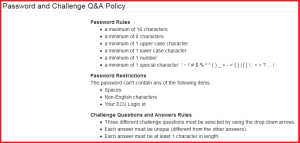So I’ve been getting emails from Let’sEncrypt telling me that my certs are coming in through the old ACME v1 protocol and that if I wish to continue receiving certificates, I need to update my certbot.
I figured this was just because the Ubuntu version I had been running was a little on the old side and was no longer receiving non-security updates, prompting me to update to Bionic (v18).
But the emails kept coming, and it became apparent that the version of certbot I had was woefully out of date (0.31 vs 1.3.0).
Turns out, the certbot team doesn’t have anyone with expertise in packaging for Debian systems – so this has fallen by the wayside (even for their own PPA).
And yet… the EFF’s website containing guidance for getting certbot up and running on various systems still provides a guide for installing using the PPA. There is a justification for doing so, but as of June 2020, the software installed via PPA will be useless, so I’m not entirely sure why it’s still the recommended method 2 months out.
At any rate, here’s what I did to update mine in order to continue working with my hosting software:
wget https://dl.eff.org/certbot-auto
sudo mv certbot-auto /usr/local/bin/certbot-auto
sudo chown root /usr/local/bin/certbot-auto
sudo chmod 0755 /usr/local/bin/certbot-auto
/usr/local/bin/certbot-auto --help
(as per instructions from https://certbot.eff.org/docs/install.html#certbot-auto)
That ain’t all though. This worked fine on my main server, but the secondary server threw an error:
/usr/local/bin/certbot-auto --help
Requesting to rerun /usr/local/bin/certbot-auto with root privileges...
Creating virtual environment...
Traceback (most recent call last):
File "<stdin>", line 27, in <module>
File "<stdin>", line 19, in create_venv
File "/usr/lib/python2.7/subprocess.py", line 185, in check_call
retcode = call(*popenargs, **kwargs)
File "/usr/lib/python2.7/subprocess.py", line 172, in call
return Popen(*popenargs, **kwargs).wait()
File "/usr/lib/python2.7/subprocess.py", line 394, in __init__
errread, errwrite)
File "/usr/lib/python2.7/subprocess.py", line 1047, in _execute_child
raise child_exception
OSError: [Errno 2] No such file or directory
Turns out, that “no such file or directory” came from the fact I’d never used virtual environments on the secondary server.
Quickly fixed by installing the package:
sudo apt install virtualenv
I’m informed that on RedHat-based systems, you need the python3-virtualenv package, but that didn’t do anything for me.
And then, to maintain compatibility with calls for the old certbot and letsencrypt commands:
cd /usr/bin/
sudo ln -s /usr/local/bin/certbot-auto letsencrypt
sudo ln -s /usr/local/bin/certbot-auto certbot
Running certbot with the –version arg should then show you a current version.
I’m surprised at how little support the deb based systems are getting from the certbot crew – I’ve been otherwise impressed with Let’sEncrypt’s work thus far.

